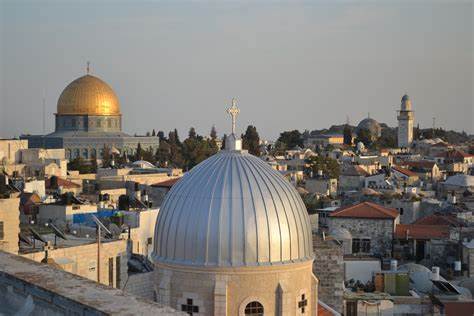We had another early start on Wednesday as we had a lot of ground to cover–literally. We left Petra after breakfast and Yusef drove us North to visit an archeological site I had been fascinated with ever since doing the research for The Mystery of the Magi. Khirbet et Tannur (Khirbet means “ruins”) The Ruins of Tannur are those of a hilltop Nabatean temple in the middle of the most dramatic mountainous desert landscape. (Pictures on Twitter) On the way to the site we stopped at the ruins of Bozrah–the capital city of the Old Testament nation the Edomites.
Knowing I was researching a book on the Shepherds of Bethlehem we stopped to photograph one of the many flocks still there in the countryside with their shepherd with them. I was surprised when Yusef stopped the car again in the next village to point out two young Arab men who were looking after about a dozen goats in a pen. Yusef explained that they were gathering the goats for sacrifice. I was not aware that Muslims still offer animal sacrifices, but Yusef said they were about to do so for the feast of Eid which is next week. So we got out and Yusef interpreted as I interviewed the guys about their work. Fascinating.
Khirbet et Tannur took some finding. It is not a famous site and even Yusef had a bit of trouble finding it. However, Yusef is one of the few guides who even knows about this more obscure site so he was thrilled to find another enthusiast. We finally found the place and set out on an hour’s hike up the mountain. There were amazing views all around. One of the reasons I am so interested in Tannur is because the American archeologist Nelson Glueck discovered there in the 1930s a stone carved zodiac–proving that the Nabateans were astrologers and that the Nabatean religion was astral–lending evidence to my claim that the wise men came from Petra/the Nabatean kingdom.
The climb to the top was pretty strenuous for this old man, but it was worth the effort. The temple came down in an earthquake in the fourth century, but the ruins are there to be seen–some walls, plenty of dressed stone, earthworks and while it is difficult to imagine the reality of archeological sites–for the untrained eye like mine all we see is a pile of stones–at Tannur, because the site is really quite small one can visualize the temple layout more easily.
It was another hour’s hike back down the mountain, then another two hour drive North to the city of Madaba where Yusef had arranged for me to meet Amer Twal–a young executive in the Jordanian Office of Tourism. Amer’s job is promoting tourism to Jordan, so he took a copy of my book on the Magi and perhaps wants to develop Magi tours.
After meeting with Amer we met with Mr Ashraf Haddad who owns a mosaic workshop in Madaba. His company is doing some mosaic work for our new church in South Carolina, so it was good to meet with him, tour his workshop and answer some questions they had about the commission, and to discuss future projects. If any readers wish to beautify their church with first rate (and very affordable) genuine original mosaic work drop me a line and I’ll connect you with Mr Haddad.
Yusef knew a good restaurant in Madaba so off we went–pretty hungry after our long day. On the walk back to our hotel at around 10:30 pm the shopping area of Madaba was super busy with lots of people out and about–with a party atmosphere. Yusef explained that this was because we are still in the month of Ramadan. Muslims fast from sunrise to sunset–so in the evenings they get out and about enjoying restaurants and hospitality and fellowship. A visit to Israel opens your eyes to modern day Judaism. A visit to Jordan opens your eyes to modern day Islam–Ramadan and animal sacrifices included.







Leave A Comment
You must be logged in to post a comment.